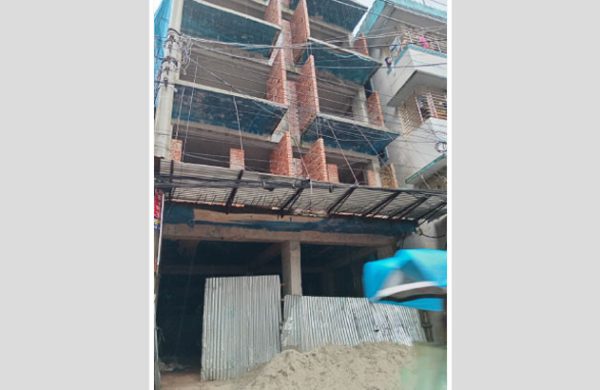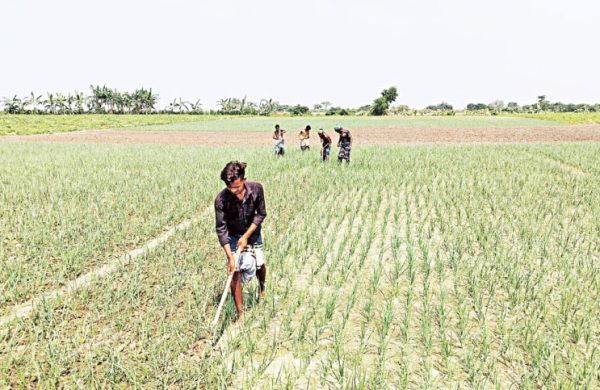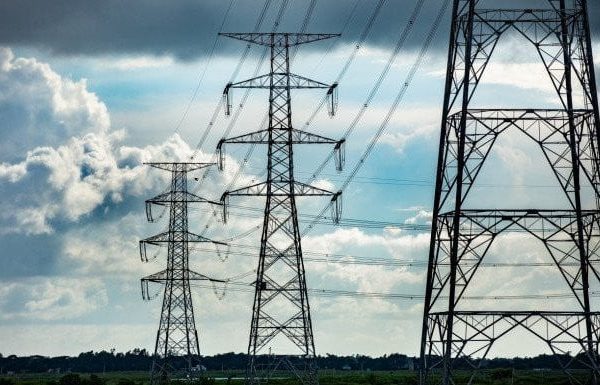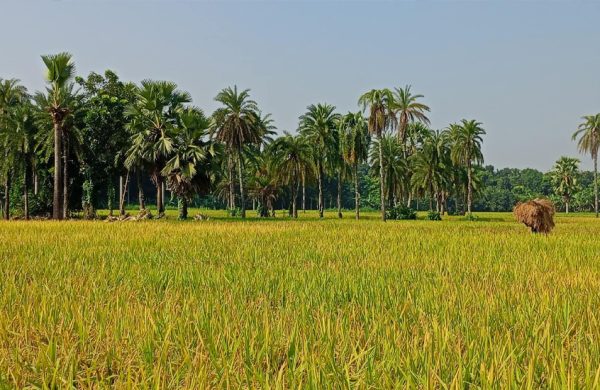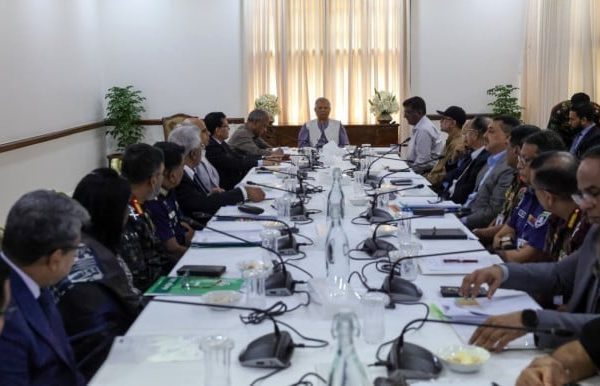BD supply chain decisively tilts towards China
- Update Time : Tuesday, October 28, 2025
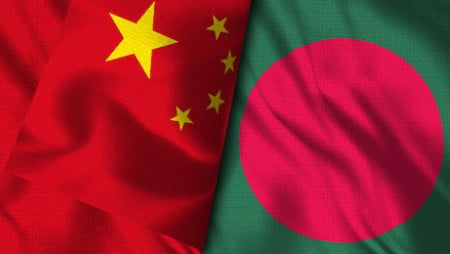
TDS Desk:
Once, India was the first port of call for Bangladeshi traders sourcing goods and raw materials. But in the span of just a decade and a half, the tide of commerce has shifted decisively eastward.
Bangladesh now looks primarily to China, a country that has not only become Dhaka’s largest trading partner but also an indispensable cog in its import-dependent economy.
From household goods and industrial machinery to food ingredients, construction materials and pharmaceuticals, Chinese imports now permeate nearly every sector of Bangladesh’s daily life and production chain.
Economists say this reliance has reached a point where China is no longer just a trading partner, it is an “essential system” underpinning Bangladesh’s industrial and consumer landscape.
A TRANSFORMATION FIFTEEN YEARS IN THE MAKING
According to data from the Bangladesh Bank and the Export Promotion Bureau (EPB), Bangladesh imported goods worth just $3.4 billion from China in FY2008–09, while exporting a modest $100 million. Fast forward to FY2024-25, and the bilateral trade volume has soared to $17.35 billion, with imports from China reaching $16.64 billion and exports hovering at $715 million.
Even as overall trade fluctuates – $21.8 billion in FY2023-24, $18.5 billion in FY2022-23 – the pattern remains constant: Bangladesh buys far more from China than it sells, making the latter the linchpin of its manufacturing and consumer supply chain.
“Bangladesh no longer has an alternative to China in terms of products, raw materials and technology,” said Professor Dr Mostafizur Rahman, Honorary Fellow at the Centre for Policy Dialogue (CPD). “From capital machinery to consumer goods, China provides quality and affordability — two things our industries depend on.”
DEPENDENCE ACROSS THE BASICS: FOOD TO FACTORIES
Analysis shows that Bangladesh’s dependence on China now cuts across every essential need – from food and clothing to housing, education and healthcare.
While India once dominated Bangladesh’s food imports, China has overtaken it in recent years. Data from the Bangladesh Bureau of Statistics (BBS) show that in FY2023-24, food products worth Tk 1.26 lakh crore were imported from China, 23% of total food imports. India followed at Tk 56.56 thousand crore, or 13.5%.
“Chinese suppliers are reliable, prices are competitive, and LCs are processed efficiently,” said Abul Bashar Chowdhury, Chairman of BSM Group, one of Bangladesh’s leading food importers. “When you combine that with consistent quality, it’s hard to look elsewhere.”
Bangladesh also sources vast amounts of fertilisers, pesticides, edible oils, spices and processed food ingredients from China. The Ministry of Agriculture confirms that China remains a “reliable source” for fertiliser imports, while nearly half of the country’s pesticide inputs originate there.
TEXTILES: THE 80% DEPENDENCE
The story is even starker in Bangladesh’s flagship export sector – ready-made garments (RMG).
According to the Bangladesh Trade and Tariff Commission (BTTC), around 80% of the woven fabrics and up to 80% of the chemicals and accessories used in garment manufacturing are imported from China.
In FY2024–25 alone, Bangladesh imported $18.4 billion worth of raw materials for the RMG industry — the majority from China.
“Artificial and man-made fibres are now the future of the global apparel trade, and we are almost entirely dependent on China for that,” said Faruque Hassan, former President of the BGMEA. “Our backward linkage industry hasn’t yet matured. Until it does, China will remain our backbone.”
BUILDING BANGLADESH WITH CHINESE BRICKS!
The construction and infrastructure sectors tell a similar story.
From cement to steel and tiles, Chinese imports dominate the market. Around 35% of clinker, the main raw material for cement, comes from China. Similarly, the country supplies a large share of coal, iron, and construction machinery.
“Five core materials are needed for cement — clinker, gypsum, slag, limestone, and fly ash — most of which are import-dependent,” said Amirul Haque, Managing Director of Premier Cement. “China remains a critical supplier, alongside India and Indonesia.”
China’s imprint is also visible in the skyline itself — in Padma Bridge Link Road, Karnaphuli Tunnel, Payra Port, and expressways — all built with Chinese technology, funding, or contractors.
EDUCATION AND PAPER: THE QUIET IMPORTS
Few realise that even the paper students write on and the pens they use are part of this import chain.
Bangladesh consumes around one million tonnes of paper annually. While much is produced locally, the pulp and heavy-grade paper used as raw material largely come from China.
“Nearly every mill in Bangladesh imports pulp from China,” said Mohammad Akhtaruzzaman, Director of Amber Paper Mills Ltd. “The scale, pricing, and logistics make China impossible to replace.”
From markers and calculators to digital education tools, China supplies not only the finished goods but also the machinery that manufactures them.
MEDICINE AND TECH: THE INVISIBLE DEPENDENCY
Bangladesh’s booming pharmaceutical sector – valued at over Tk 25,000 crore and exporting to 160 countries – depends on China for nearly 60% of its active pharmaceutical ingredients (APIs).
“The Chinese supply chain underpins our entire drug formulation industry,” said Md Zakir Hossain, Secretary General of the Bangladesh Association of Pharmaceutical Industries. “They’re reliable, affordable, and irreplaceable at this stage.”
Meanwhile, almost every electronic device, diagnostic machine, and hospital testing kit found in Bangladeshi markets has Chinese origins. The country’s shift toward automation and green technology – from solar panels to lithium batteries – further deepens the link.
TRADE BUILT ON STABILITY AND TRUST
Economists note that China’s steady, predictable trade policies have made it a preferred partner compared to others.
“Bangladesh’s relations with India have often been marred by border issues, tariff disputes and logistical bottlenecks,” said Dr Sahabul Haque, General Secretary of the Bangladesh-China Alumni Association (ABCA). “China, by contrast, offers reliability and continuity. Businessmen value that.”
This trust has been reinforced by strong government-to-government ties. Since establishing diplomatic relations in 1975, both nations have steadily expanded cooperation — from trade and investment to education and infrastructure. Today, China is involved in over 30 major projects in Bangladesh, under frameworks like the Belt and Road Initiative (BRI) and the BCIM Economic Corridor, with investments exceeding $10 billion.
AN INESCAPABLE INTERDEPENDENCE
Bangladesh’s economic rise and China’s industrial dominance have become intertwined stories.
What began as a pragmatic trade relationship has evolved into structural interdependence. From the garments that drive Bangladesh’s exports to the garlic in its kitchens, the imprint of Chinese supply chains is everywhere.
For now, the “Made in China” label is more than a symbol of affordability — it’s the foundation of Bangladesh’s growth story.
And as economists warn, that foundation must now be managed with strategy and foresight — because China is no longer simply a trading partner. It has become, in every sense of the word, essential.


